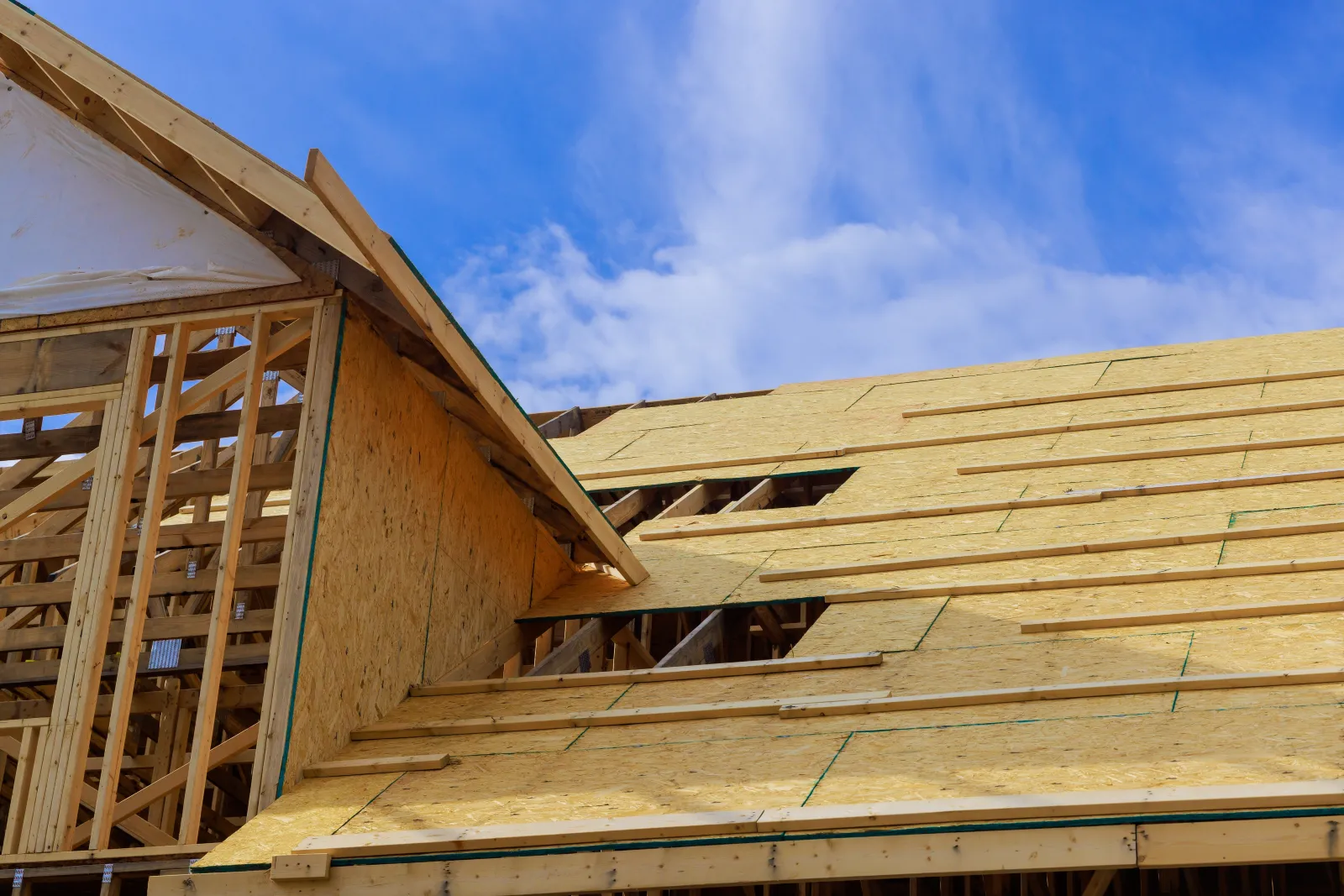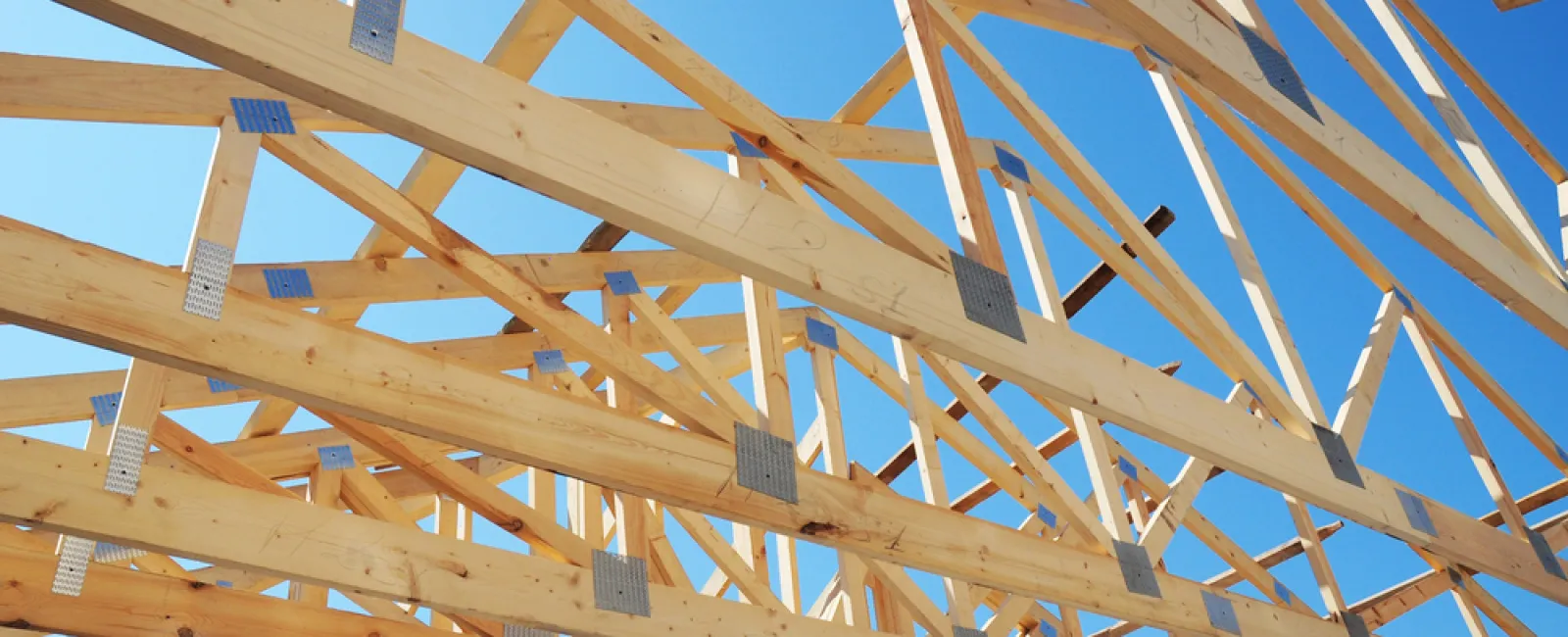Underneath the shingles that adorn your
home lies a complex and crucial component: the roof framing system. Roof
framing is the backbone of your roof, playing a pivotal role in its stability,
shape, and longevity. Understanding the roof framing system can help you
appreciate its importance in safeguarding your home and prepare you for any
potential issues or renovations.

Types of Roof Framing
Roof framing systems come in different types, each suited to various architectural styles and needs. The main types of designs use rafters or trusses. Rafters are framing boards built on-site, reaching from the ridge to the wall plate. These components include rafter boards, ceiling joists, and a ridge board. They are generally less heavy than trusses and make it easier to install insulation.
Trusses are preconstructed, and since they come already
assembled, they tend to be significantly higher than rafters. However, they do
tend to be more cost-effective and quicker to install.
Key Components of Roof Framing
The roof framing system is made up of several essential
components that ensure your roof's strength and stability. One of the primary
elements is the ridge board, which runs horizontally along the peak of the
roof. It serves as a central support for the rafters or trusses, which extend
from the ridge board down to the exterior walls. Rafters are sloped beams that
form the sides of the roof, while trusses are prefabricated triangular units
that offer robust support.
Ceiling joists, which run parallel to the rafters, help keep the
roof structure intact and provide a base for the ceiling below. Collar ties,
another important feature, are horizontal beams that connect pairs of rafters
near the roof's peak, adding extra support and preventing the roof from
spreading outward. Each of these components works together to create a durable
and reliable roof framing system that can withstand various weather conditions.
Materials Used in Roof Framing
The materials chosen for roof framing are crucial for the roof's overall strength and durability. Wood is the most commonly used material because it's versatile and easy to work with. It can be cut and adjusted on-site, making it perfect for custom builds and residential homes.
On the other hand, steel is gaining popularity, especially in
commercial and industrial settings. Steel offers superior strength, is
resistant to fire and pests, and can support larger structures. However, it is
more expensive and requires specialized tools and expertise for installation.
The choice between wood and steel often depends on factors like budget, climate
conditions, and specific building needs. Both materials have their pros and
cons, and understanding these can help you make an informed decision when
planning your roof framing system.
Roof Framing for Different Roof Styles
Roof framing must adapt to the variety of roof styles found in
different homes. For instance, gable roofs, which are shaped like a triangle,
utilize straightforward rafters or trusses, making them relatively easy to
construct. Hip roofs, which have slopes on all four sides, demand more
intricate framing techniques to ensure they remain stable. Flat roofs, often
seen in modern architecture, require a mix of trusses and beams for adequate
support. Each roof style presents unique challenges and requirements for the
framing system, affecting the complexity and materials needed.
Roof Framing and Insulation
Roof framing and insulation work together to keep your home comfortable and energy-efficient. The spaces between rafters or trusses are typically filled with insulation materials like fiberglass or foam, which help maintain a consistent indoor temperature. Properly designed roof framing ensures there's enough room for the insulation to be effective without compromising the structure. This balance is essential for energy efficiency, as good insulation reduces heating and cooling costs by keeping your home warm in the winter and cool in the summer.
In older homes, you might find that the roof framing doesn't
accommodate modern insulation standards, leading to higher energy bills and
uncomfortable living conditions. In such cases, retrofitting the roof framing
to add more insulation can be a worthwhile investment. Additionally, ensuring
that there are no gaps or weaknesses in the insulation is crucial, as even
small leaks can significantly impact your home's overall efficiency. When planning
or renovating your roof, considering both framing and insulation together will
result in a more comfortable and cost-effective home.
Common Roof Framing Issues Homeowners Should Know
Despite being designed for strength and durability, roof framing systems can face several common issues. Sagging is a somewhat common problem, often caused by undersized framing components or the extra weight from snow and ice. Wood framing is also vulnerable to rot and insect damage if it's not properly maintained. Over time, fasteners like nails and screws can loosen, compromising the stability of the roof structure. Regular inspections can help catch these issues early, preventing minor problems from turning into costly repairs.
When you're replacing or repairing your roof, who you choose matters. At Master Roofers, we pride ourselves on customized roofing solutions throughout New Hampshire, North Shore, Massachusetts, and Portland, Maine. Call us at (603) 623-4973 or contact us online to discuss your project and get a quote.
Click here to learn more about the anatomy of a
roof.

